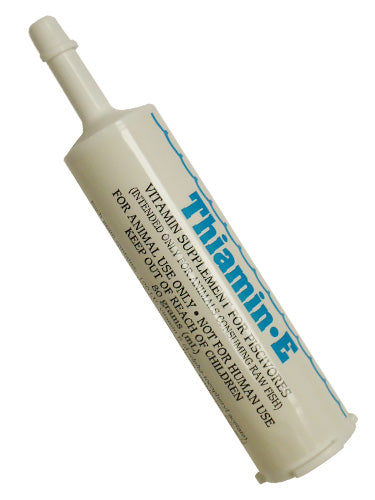Hello I have some predatory fish (miniatus grouper, clown grouper, tesalata eel, small red tooth trigger) I am currently feed them whole fish sold at my local fish shop but its becoming quite pricey what other alternatives could I fees them from a supermarket?
Navigation
Install the app
How to install the app on iOS
Follow along with the video below to see how to install our site as a web app on your home screen.
Note: This feature may not be available in some browsers.
More options
You are using an out of date browser. It may not display this or other websites correctly.
You should upgrade or use an alternative browser.
You should upgrade or use an alternative browser.
Alternative foods for predatory fish
- Thread starter reefer arno
- Start date
- Tagged users None
Hello I have some predatory fish (miniatus grouper, clown grouper, tesalata eel, small red tooth trigger) I am currently feed them whole fish sold at my local fish shop but its becoming quite pricey what other alternatives could I fees them from a supermarket?
Feeding whole fish to predators can be an issue depending on the species of fish you are feeding them. Some types of food fish are high in thiaminase, which breaks down vitamin B1. Almost all seafoods are also low in vitamin E.
The fish you have should also be fed shrimp, squid and perhaps clams cut into the correct size.
There is a company in the US that makes a vitamin paste that supplements both of these, but they sell mostly to public aquariums and zoos:

ThiaminE Paste Cartridge
ThiaminE Paste is a blend of vitamins for marine mammals, birds and other aquatic species whose diet consists mainly of raw fish. This supplement contains no vitamin A and should be fed with whole fish containing livers, which are a good source of vitamin A. The paste format makes it easy to mix...
 mazuri.com
mazuri.com
Here is a write up I did on thiaminase:
Thiaminase
Thiaminase is an enzyme that metabolizes or breaks down thiamine (vitamin B1). In high enough concentrations in food, thiaminase will create thiamin deficient diets in fish. This is a common, yet serious problem with predatory fish that are fed feeder goldfish, as goldfish are very high in thiaminase. Lionfish, piranha and oscars cichlids were commonly fed all-goldfish diets by home aquarists. Health issues in their fish were then very common; fatty liver disease in lionfish, pica in piranha (where they eat each other to try to get more thiamin) and HLLE in oscars. Fresh seafoods known to be high in thiaminase can be supplemented with thiamin. Conversely, aquarists can avoid feeding fresh seafoods known to be high in thiaminase.The actual impact of thiaminase on a fish’s diet depends on three factors:
What proportion of thiaminase-containing food is fed to the fish
What the concentration of thiaminase is in the food item
How much vitamin B1 is already present in the food
The following is a partial list of seafoods that contain and don’t contain thiaminase:
Species high in thiaminase
Anchovy (Engraulis sp.)
Atlantic herring (Clupea harengus)
Capelin (Mallotus villosus)
Carp (Cyprinus carpio)
Clams (family Veneridae)
Goldfish (Carassius auratus)
Lobster (Homarus americanus)
Menhaden (Brevoortia spp.)
Minnows (Cyprinids)
Mussels (Mytilus spp.)
Rainbow smelt (Osmerus mordax)
Sardine (Harengula spp.)
Scallops (Pecten spp.)
Shrimp and prawns (various species)
Skipjack tuna (Katsuwonus pelamis)
White bass (Morone chrysops)
Yellowfin tuna (Neothunnus macropterus)
Species lower in thiaminase
Atlantic cod (Gadus morhua)
Atlantic hake (Merluccius bilinearis)
Atlantic halibut (Hippoglossus hippoglossus)
Atlantic mackerel (Scomber scombrus)
Atlantic salmon (Salmo salar)
Brown trout (Salmo trutta)
Catfish (Ictalurus and related spp)
Cisco (Coregonus spp.)
Coho salmon (Oncorhynchus kisutch)
Flounder / sole (Pleuronectes and related spp.)
Haddock (Melanogrammus aeglefinus)
Hake (Urophycis spp)
Lake trout (Salvelinus namaycush)
Mullet (Mugilidae spp)
Poecilids (Guppies, platies, mollies)
Pollock/Pollack (Pollachius spp.)
Rainbow trout (Oncorhynchus mykiss)
Tilapia (Oreochromis spp)
Worms (Lumbricus spp)
Silversides confusion – many aquarists feed frozen “silversides” to their aquarium animals. True silversides (Atherinids) are low in thiaminase. Many fish food manufacturers use other fish species and call them “silversides”. Some of those fish are actually smelts or sardines and are high in thiaminase. Of five products on the market that were looked at, only one contained actual silversides (Rowlett, 2017). True silversides will have two dorsal fins (the first one may lie close to the body). The smelts have an adipose fin and a single dorsal fin (like trout do).
Jay
Similar threads
- Replies
- 3
- Views
- 243
- Replies
- 12
- Views
- 297
- Replies
- 3
- Views
- 156
- Replies
- 8
- Views
- 157
New Posts
-
-
-
Help me understand how a refugium outcompetes other algae
- Latest: VintageReefer
-












